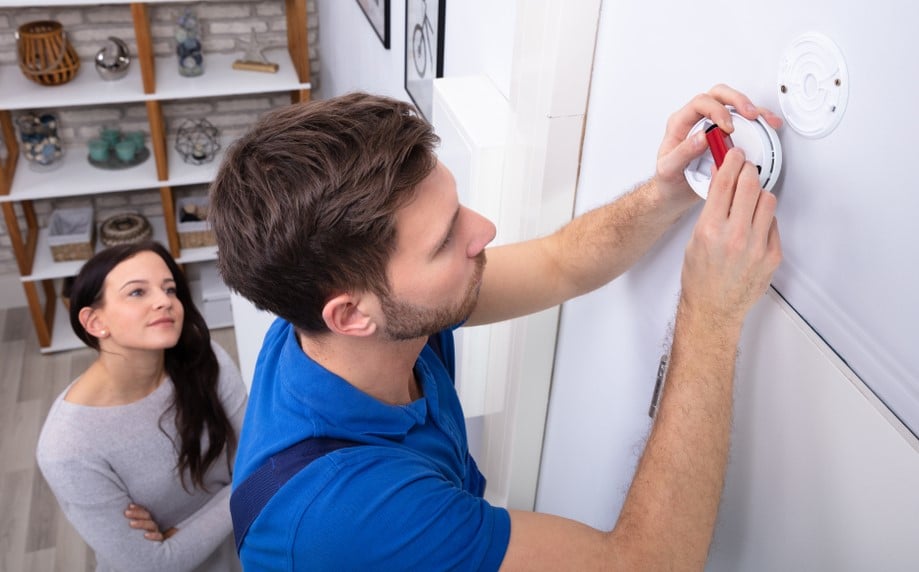
8:01 AM, 30th September 2022, About 2 years ago
Text Size
The rules for smoke and carbon monoxide alarms in England’s rental properties have changed – and landlords and agents need to understand the new rules.
The move is part of the Government’s plan to create a ‘safer, better and bigger’ PRS.
It’s worth noting that the changes do not appear to be vastly different – but they are significant for both landlords and agents.
Also, there is no transitional period.
That means from 1 October, a landlord could be facing a fine of £5,000 for breaching the new rules.
The new smoke and Co alarm regulations apply to all social and private rented tenancies, other than those explicitly excluded – and the excluded tenancies are:
Timothy Douglas, Propertymark’s head of policy and campaigns, told Property118.com: “Propertymark has long called for tenants to receive the same level of protection, irrespective of tenure, and these changes go some way to rectifying that.
“The updated regulations contain some subtle but significant changes for agents and landlords working in the Private Rented Sector, so we urge them to familiarise themselves with the requirements and begin the installation of new alarms and the repair of existing alarms in preparation for its effect from 1 October in order to not fall foul.”
Paul Offley, compliance officer at the Guild of Property Professionals, said: “Lettings agents should be in the process of making sure that all of their managed stock has the required alarms and meets the requirements.
“All alarms must be tested and working on the day the tenancy commences and either the landlord or agent will need to demonstrate this.”
The Department for Levelling Up, Housing and Communities have published its own ‘Smoke and Carbon Monoxide Alarm (Amendment) Regulations 2022: guidance for landlords and tenants’ which offers landlords and agents everything they need to know.
For those who may not be aware, the Smoke and Carbon Monoxide Alarm (England) Regulations 2015 came into force on 1 October 2015.
But from 1 October 2022, all landlords need to understand the Smoke and Carbon Monoxide Alarm (Amendment) Regulations 2022.
Essentially, the new rules mean that landlords must:
However, to help landlords and agents, here are five Q&As about the new smoke and CO alarm rules from the Government’s site you might feel are helpful:
The regulations do not stipulate the type of alarms (such as mains powered (‘hard-wired’) or battery powered) that should be installed. We recommend that landlords choose the type of smoke alarms based on the needs of their building and their tenants, and that those alarms are compliant with British Standards BS 5839-6. Where battery powered alarms are selected, alarms with ‘sealed for life’ batteries rather than alarms with replaceable batteries are the better option.
The regulations do not stipulate the type of alarms (such as mains powered (‘hard wired’) or battery powered) that should be installed. Landlords should make an informed decision and choose the type of carbon monoxide alarms based on the needs of their building and their tenants, and that those alarms are compliant with British Standards BS 50291. Where battery powered alarms are selected, alarms with ‘sealed for life’ batteries rather than alarms with replaceable batteries are the better option.
The regulations do not stipulate where the alarms should be placed. At least one smoke alarm should be installed on every storey which is used as living accommodation. Landlords should follow the individual manufacturer’s instructions when installing the alarms. However, in general, smoke alarms should be fixed to the ceiling in a circulation space, i.e. a hall or a landing.
The regulations do not stipulate where the alarms should be placed. A carbon monoxide alarm should be installed in every room which is used as living accommodation containing a fixed combustion appliance (excluding gas cookers). Landlords should follow the individual manufacturer’s instructions when installing the alarms. However, in general, carbon monoxide alarms should be positioned at head height, either on a wall or shelf, approximately 1-3 metres away from a potential source of carbon monoxide.
Landlords will be responsible for repairing or replacing any faulty alarms. If tenants find that their alarms are not in working order during the tenancy, they are advised to arrange for the replacement of the batteries. If the alarm still does not work after replacing the batteries, or if tenants are unable to replace the batteries themselves, they should report this to the relevant landlord.
An action guide has been published by the repairs and maintenance management platform, Fixflo, and the British Landlord Association (BLA) has also published a useful page of information on their site.
Previous Article
HMO fire doors - Replace or Repair?Next Article
England’s BTL void periods decline across the board